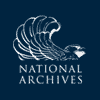Thomas Jefferson to George Washington, 21 March 1781
From Thomas Jefferson
Richmond Mar. 21st 1781
Sir
The inclosed Letter will inform you of the arrival of a British Fleet in Chesapeake Bay.1
The extreme negligence of our stationed expresses is no doubt the cause why as Yet no authentic account has reached us of a general action which happened on the 15. instant about a mile and a half from Guilford Court House, between General Green and Lord Cornwallis. Captain Singleton an intelligent Officer of Harrison’s artillery who was in the action is this moment arrived here, and gives me the general information,2 that both parties were prepared and desirous for action, the enemy supposed to be about 2500 strong our army about 4000. that after a very warm and general engagement of about an hour and a half, we retreated about a mile and a half from the field, in good order, having as he supposes between two and three hundred killed and wounded, the enemy between five and seven hundred killed and wounded. That we lost four pieces of artillery. that the Militia as well as regulars behaved exceedingly well. That General Green he believes would have renewed the action the next day, had it not proved rainy, and he supposes would renew it as soon as possible—That the whole of his Troops militia and regulars were in high spirits and wishing a second engagement. that the Loss has fallen pretty equally on the militia and regulars—That General Stevens received a Ball through the Thigh—Major Anderson of Maryland killed, and Capt. Barrett of Washington’s cavalry killed. Captain Fauntleroy of the same cavalry shot through the Thigh, and left in the field.3 Captain Singleton having left Camp the day after the Battle does not speak from particular returns, none such having been then made. I have the honour to be with sentiments of the highest esteem & respect Your Excellency’s Most obedt & most humble servt
Th: Jefferson
P.S. Look out Boats have been ordered from the Eastern Shore to apprize the French Fleet should it be approaching of the arrival of the British fleet in Chesapeake.4
LS, DLC:GW. LB, Vi. The complimentary closing is in Jefferson’s handwriting. The letter-book copy also is addressed to Samuel Huntington, president of Congress, and to Thomas Sim Lee, governor of Maryland (see , 5:198–200). GW replied to Jefferson on 4 April.
1. Jefferson enclosed a copy of a letter sent to him from James Barron, commodore of the Virginia navy. The copy, dated 20 March at Hampton, Va., reads: “Yesterday Morning twelve large Ships came within the Capes and anchored, sent up one frigate this Morning under English Colours, which proves them to be a British fleet. The frigate lays now in Hampton Road with Arnolds Ships; the other Ships are still in the Bay at Anchor: I take them all to be Men of War, and no Transports among them” (DLC:GW; see also , 5:187).
2. Anthony Singleton (c.1750–1795), of Virginia, joined Col. Charles Harrison’s 1st Continental Artillery Regiment as a captain in February 1777. He left the army in January 1783.
3. For the Battle of Guilford Courthouse, see Nathanael Greene to Huntington, 16 March, printed as an enclosure with Greene to GW, 17 March; see also Greene to GW, 18 March. No officers of Lt. Col. William Washington’s 3d Continental Dragoon Regiment were killed during the battle. Capt. William Barret may have been one of the two captains reported as wounded (see Greene to GW, 17 March, n.1).
William Barret (d. 1815) joined the 3d North Carolina Regiment as a captain in April 1776. He transferred to the 3d Continental Dragoon Regiment as a lieutenant in April 1778, became a captain in May 1779, and served until the end of the war.
4. For Jefferson’s orders, see his letter to George Weedon, this date, in , 5:203.

![University of Virginia Press [link will open in a new window] University of Virginia Press](/lib/media/rotunda-white-on-blue.png)
